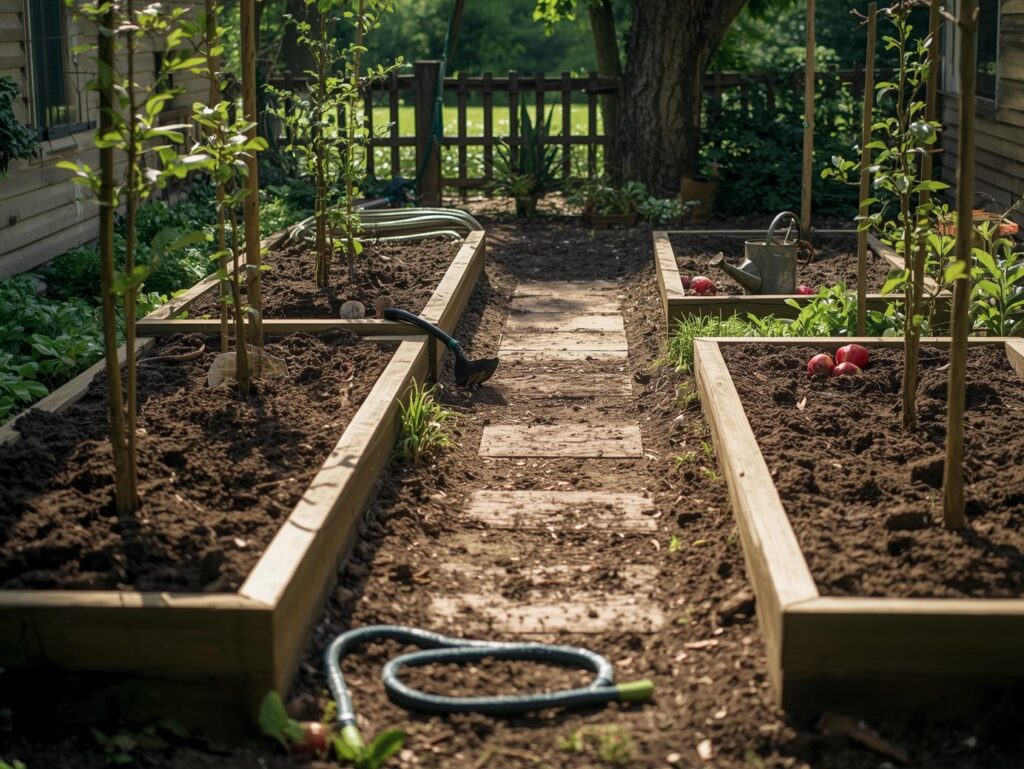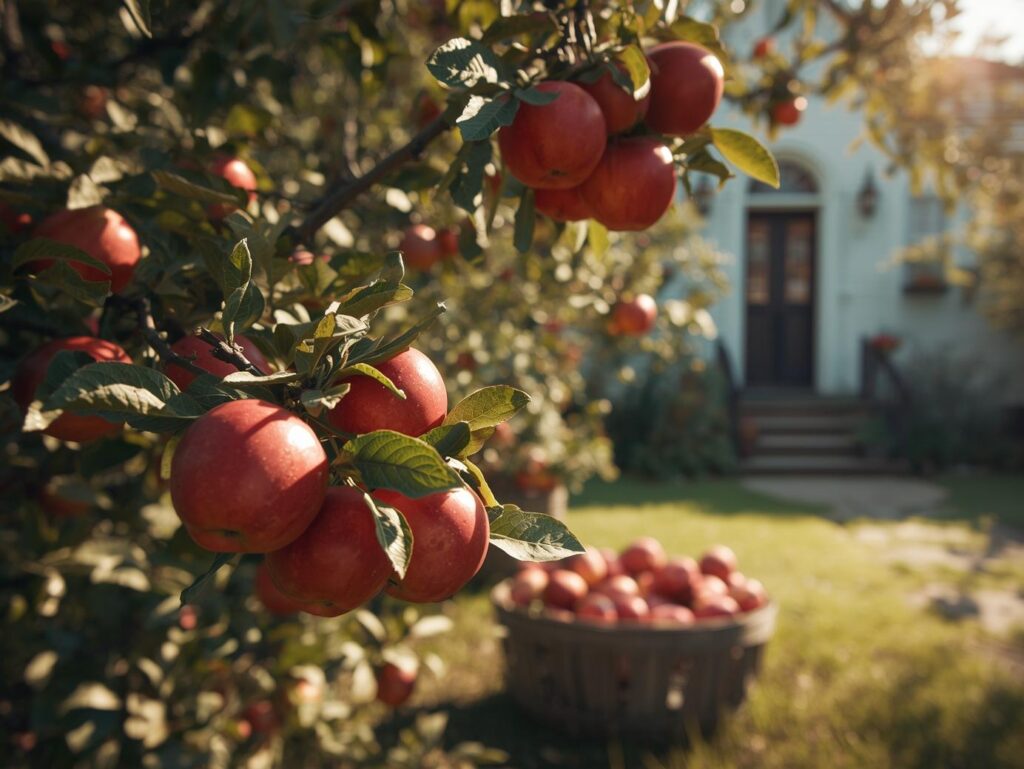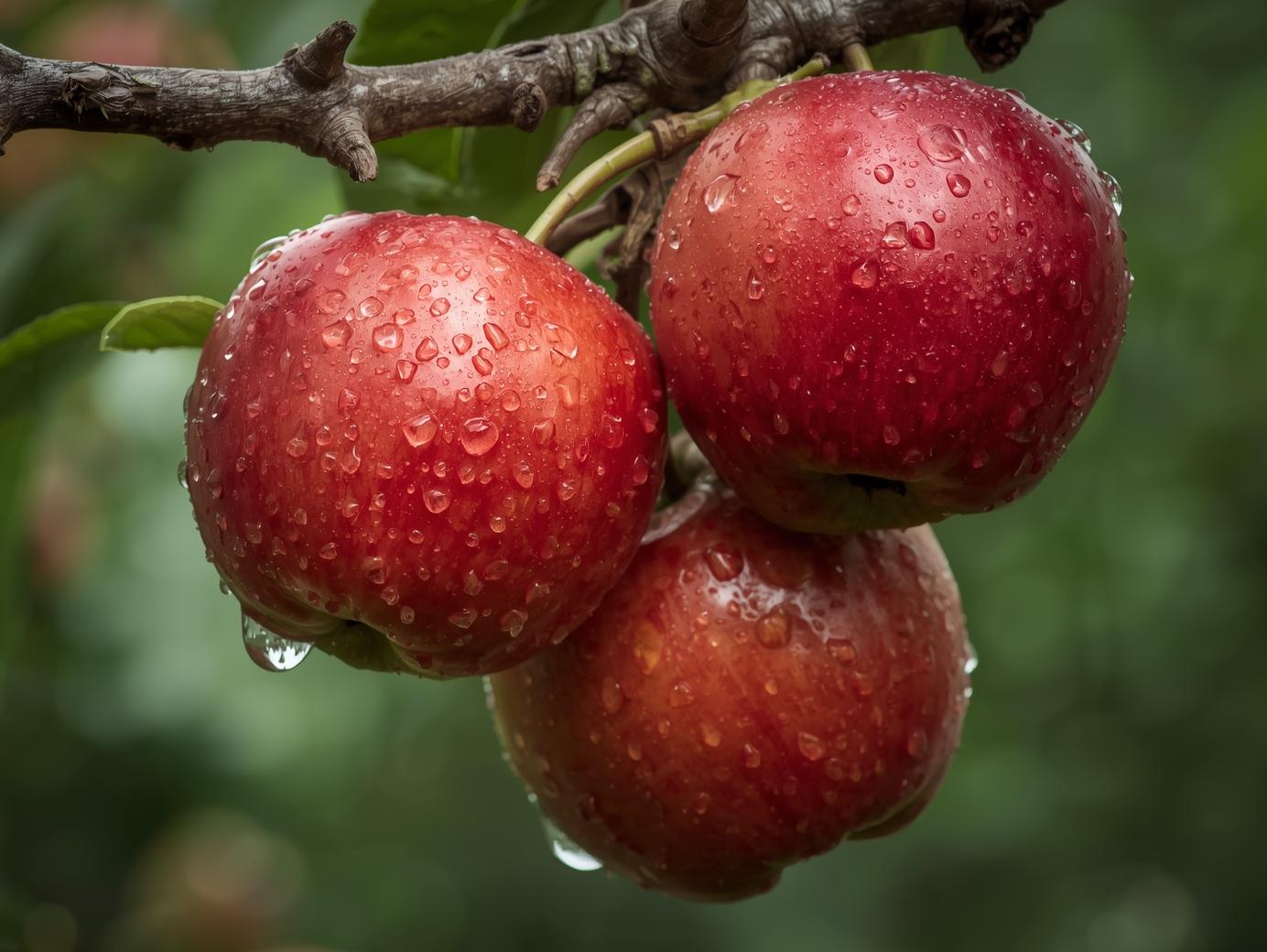Apple trees are a classic and rewarding choice for home gardeners across the United States, offering beautiful spring blossoms and crisp, delicious fruit in the fall. With proper care and attention to each stage of growth, apple trees can thrive even in small courtyard spaces. Whether planting a dwarf variety suited for limited areas or a standard tree for larger yards, understanding the key steps—from soil preparation to harvest—ensures healthy trees and bountiful yields.
Soil Selection
Apple trees prefer well-drained, loamy soil with good fertility and a slightly acidic to neutral pH between 6.0 and 7.0. Soil that retains moisture but drains well is crucial to prevent root diseases such as root rot. Before planting, test your soil’s pH and nutrient levels to make necessary amendments. Incorporating organic matter like compost or aged manure improves soil structure and provides essential nutrients, setting the stage for strong root development and vigorous growth.
Site Preparation
Choosing the right location in your courtyard is essential for apple tree success. Apple trees require full sun—at least six to eight hours daily—to produce abundant fruit and healthy foliage. Clear the area of weeds, rocks, and debris, and loosen the soil to a depth of 12 to 18 inches to promote good root penetration. Adequate air circulation around the tree reduces disease risk, so avoid planting too close to walls or other trees. For courtyards with limited space, dwarf apple varieties or espalier training can optimize the site.
Planting
The ideal time to plant apple trees is in early spring or late fall when the tree is dormant. Dig a hole twice as wide and slightly deeper than the root ball, and position the tree so that the graft union sits a few inches above soil level. Backfill with native soil mixed with compost, gently firming it to eliminate air pockets. Water thoroughly after planting to settle the soil. For container planting, use high-quality potting soil and select a dwarf or semi-dwarf variety to accommodate limited space.

Watering
Young apple trees need consistent watering to establish healthy roots, typically requiring deep watering once or twice a week during dry periods. Mature trees benefit from less frequent but thorough watering, especially during flowering, fruit set, and dry summer months. Overwatering should be avoided to prevent root suffocation and disease. Mulching around the base helps retain soil moisture, reduce weeds, and regulate temperature, promoting steady growth throughout the season.
Fertilizing
Fertilizing apple trees supports growth and fruit development, but must be balanced to avoid excessive leafy growth at the expense of fruiting. Apply a balanced fertilizer rich in nitrogen in early spring before new growth begins, followed by a second application after fruit set. Organic options like compost, well-aged manure, or fish emulsion not only feed the tree but improve soil health. Avoid over-fertilizing late in the season, which can delay dormancy and reduce cold hardiness.
Pruning and Training
Pruning apple trees annually during dormancy helps shape the tree, remove dead or diseased wood, and encourage air circulation and sunlight penetration. Pruning promotes strong branch structure and increases fruit production by stimulating the growth of fruiting spurs. Training young trees, especially in limited courtyard spaces, helps maintain manageable size and shape. Espalier and cordon methods are popular for small gardens, enabling apple trees to grow flat against walls or fences without sacrificing yield.
Pest and Disease Control
Apple trees can be vulnerable to pests such as codling moth, aphids, and apple maggots, as well as diseases like apple scab, fire blight, and powdery mildew. Regular monitoring is essential for early detection and effective management. Employing cultural practices like proper pruning, sanitation by removing fallen leaves and fruit, and selecting disease-resistant varieties helps minimize problems. Organic sprays, insecticidal soaps, and beneficial insects can aid in controlling pests naturally in home garden settings.
Fruiting and Harvest

Apple trees usually begin bearing fruit within two to five years, depending on the variety and rootstock. Flowering occurs in spring, followed by fruit development through summer. Harvest time varies by apple type but typically falls from late summer into fall. Apples are ripe when they have developed their full color, are firm but slightly tender to the touch, and detach easily from the tree when lifted and twisted. Prompt harvesting helps maintain fruit quality and reduces the risk of pest infestations or disease.
